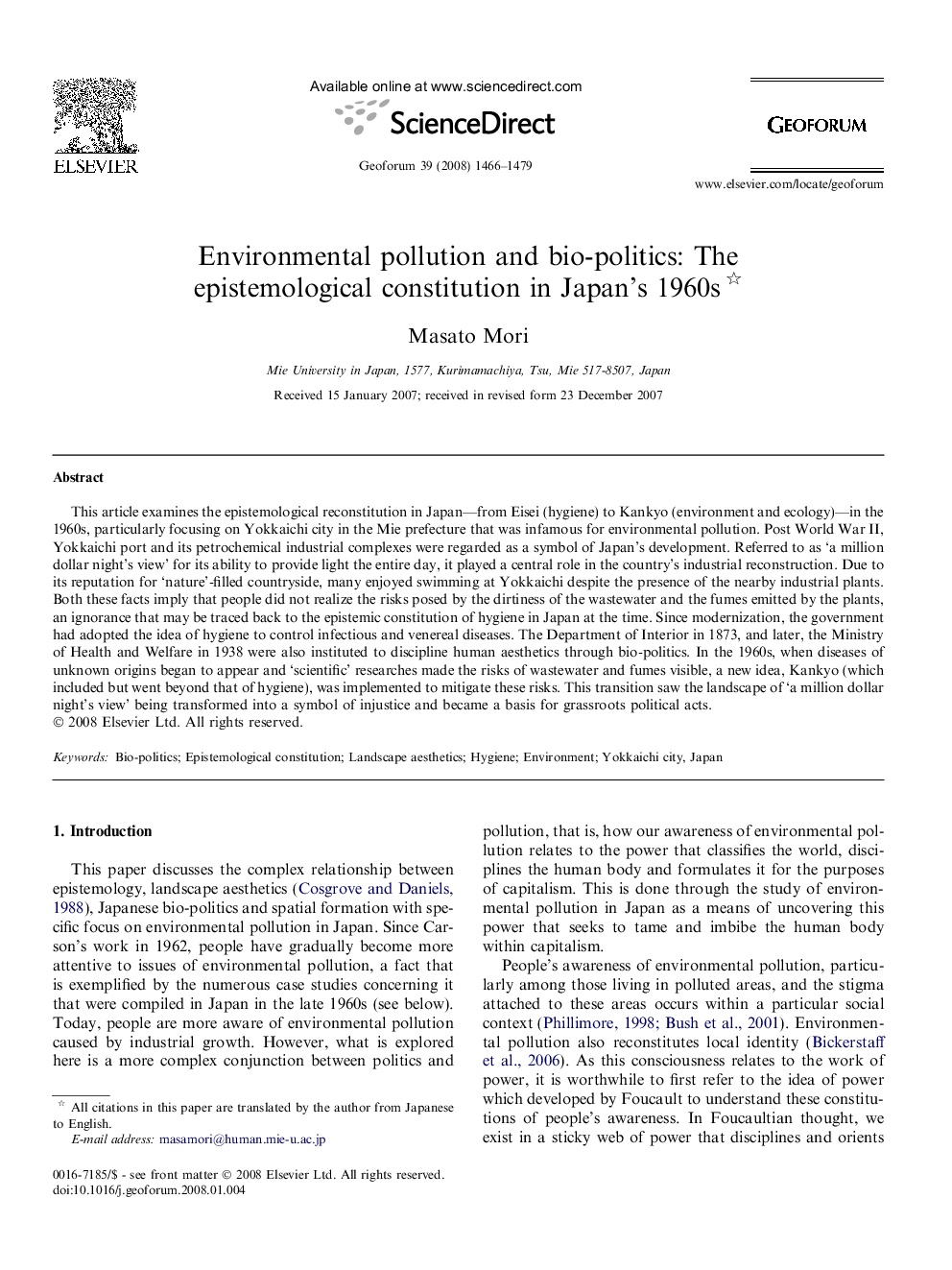| Article ID | Journal | Published Year | Pages | File Type |
|---|---|---|---|---|
| 5075136 | Geoforum | 2008 | 14 Pages |
Abstract
This article examines the epistemological reconstitution in Japan-from Eisei (hygiene) to Kankyo (environment and ecology)-in the 1960s, particularly focusing on Yokkaichi city in the Mie prefecture that was infamous for environmental pollution. Post World War II, Yokkaichi port and its petrochemical industrial complexes were regarded as a symbol of Japan's development. Referred to as 'a million dollar night's view' for its ability to provide light the entire day, it played a central role in the country's industrial reconstruction. Due to its reputation for 'nature'-filled countryside, many enjoyed swimming at Yokkaichi despite the presence of the nearby industrial plants. Both these facts imply that people did not realize the risks posed by the dirtiness of the wastewater and the fumes emitted by the plants, an ignorance that may be traced back to the epistemic constitution of hygiene in Japan at the time. Since modernization, the government had adopted the idea of hygiene to control infectious and venereal diseases. The Department of Interior in 1873, and later, the Ministry of Health and Welfare in 1938 were also instituted to discipline human aesthetics through bio-politics. In the 1960s, when diseases of unknown origins began to appear and 'scientific' researches made the risks of wastewater and fumes visible, a new idea, Kankyo (which included but went beyond that of hygiene), was implemented to mitigate these risks. This transition saw the landscape of 'a million dollar night's view' being transformed into a symbol of injustice and became a basis for grassroots political acts.
Related Topics
Social Sciences and Humanities
Economics, Econometrics and Finance
Economics and Econometrics
Authors
Masato Mori,
